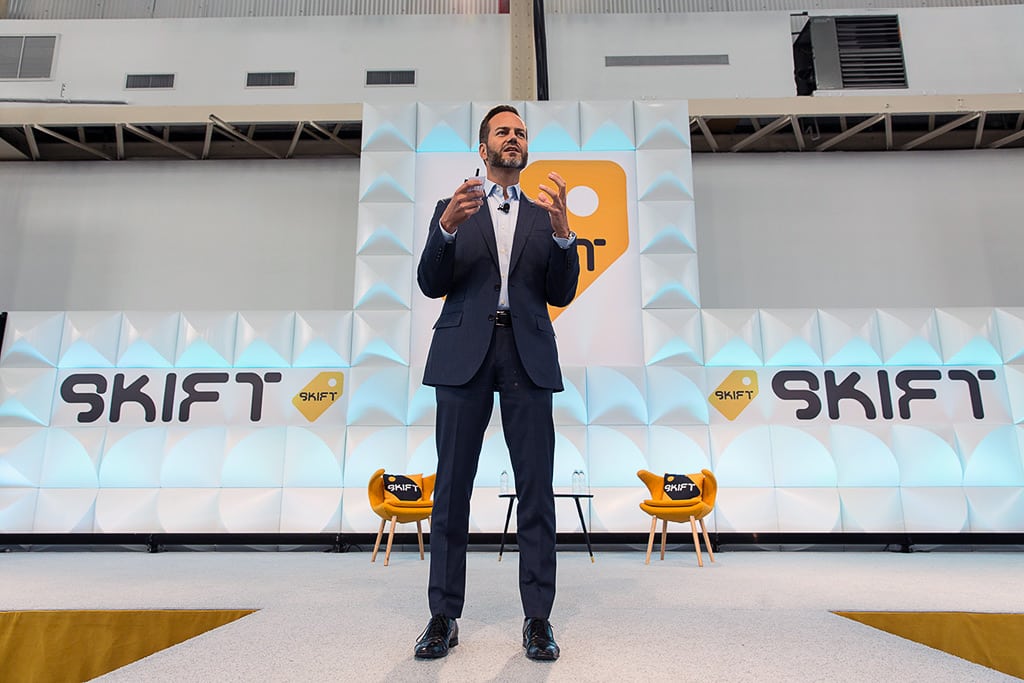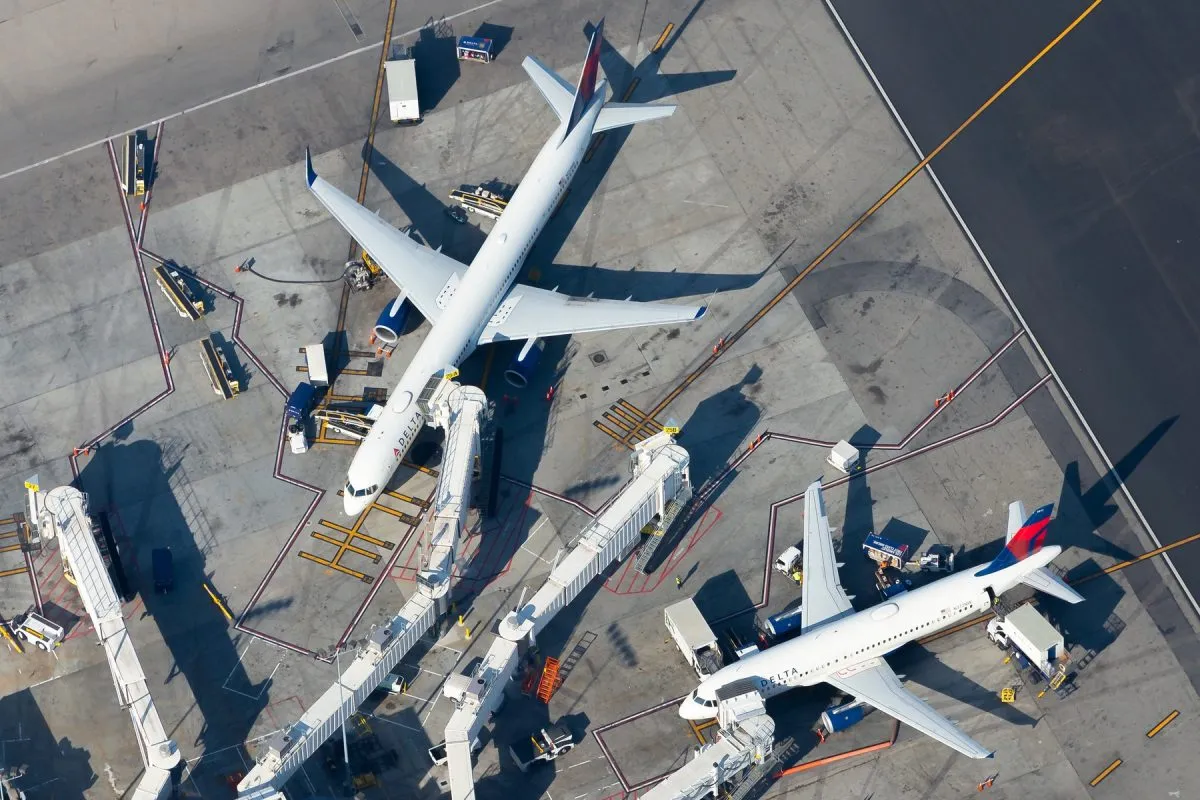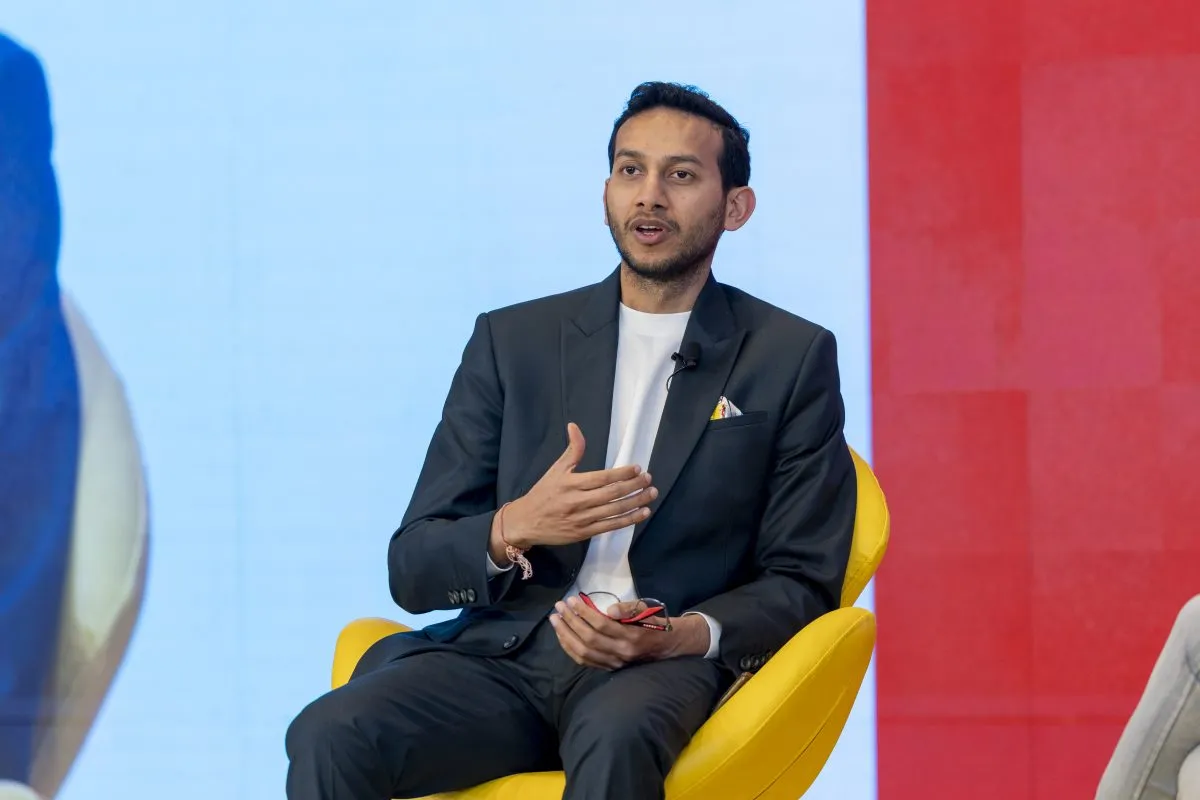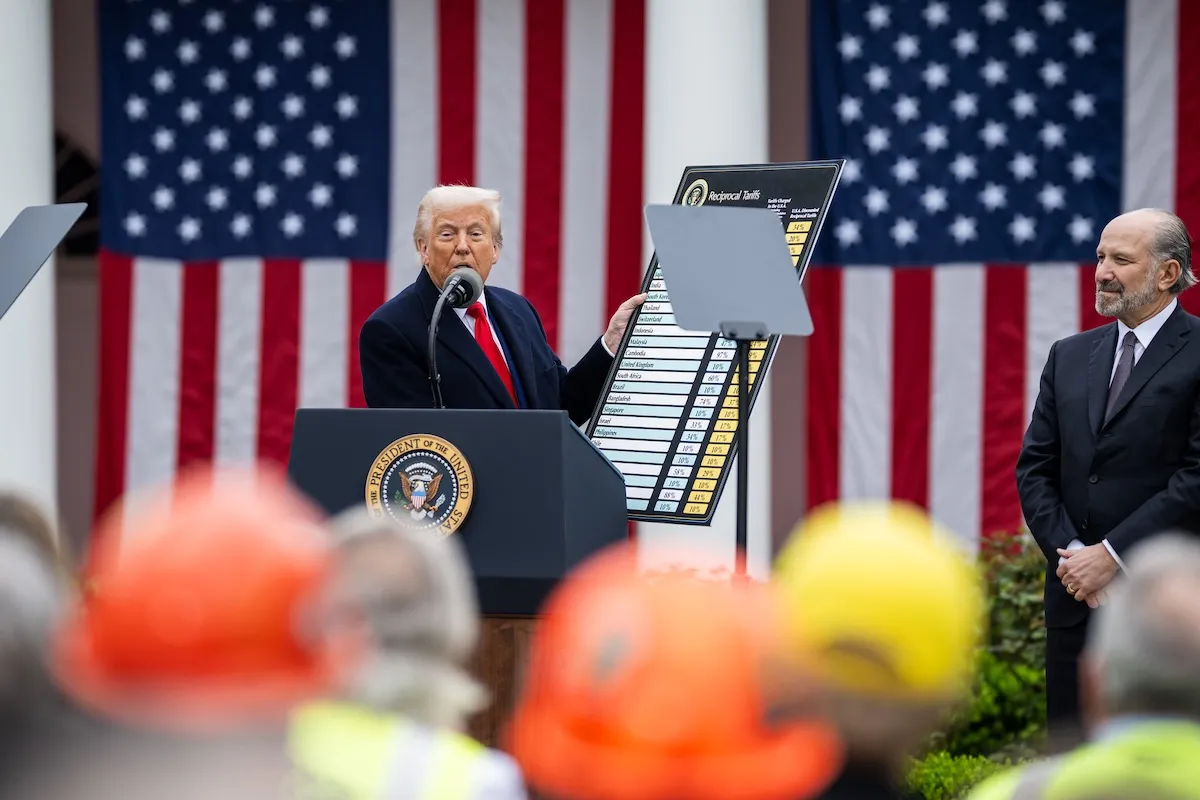16 Best Quotes From U.S. Tourism Bureau CEOs in 2015

Skift Take
We interviewed a ton of tourism bureau CEOs around the country in 2015 about their organizations' internal shifts in strategy, marketing and technology to better engage both the leisure travel and meetings sectors.
With bureaus facing increasing pressure to justify their funding and prove their economic impact, Destination Marketing Association International (DMAI) delivered its long anticipated, two-year DestinationNEXT research this past summer.
The comprehensive intelligence highlights new best practices in two-way digital communication with consumers, differentiating brand storytelling, and new partnership opportunities to drive economic development.
The challenge now for DMAI is to engage more international bureaus and more millennial bureau executives, and continually build the research and measure its relevancy year-over-year.
Following are some of the most illuminating quotes from American tourism bureau CEOs about how they're pivoting their organizations toward the future, much of it aligned with the takeaways from DestinationNEXT.
The Impact of DMAI's DestinationNEXT
Leonard Hoops, CEO, Visit Indy: On a New Way for Tourism Bureaus To Measure Their Effectiveness
“We’re taking DestinationNEXT and using it to its fullest potential, and for those other DMOs who do the same, they will have a competitive advantage. But we have to think of it as a framework that requires regular attention so that DestinationNEXT doesn’t become Destination Yesterday.”
Scott Beck, CEO, Visit Salt Lake: On a New Way for Tourism Bureaus To Measure Their Effectiveness
“Now we’re able to survey various stakeholder groups, customer groups, or our own board with this tool, and look for areas where we have opportunities to either better communicate our message or help change products at our destination, and find those areas where we’re not in alignment. So maybe we say we’re X and our customer advisory board looks at this tool, does the assessment, and says, ‘Really you’re Y. You think you’re X, we think you’re Y.’ So, wow, our customers are saying one thing and we’re saying another, so we need to work on that. I think this kind of a tool for our industry is going to be beyond a major value.”
Millennials & Meetings
Steve Moore, CEO, Visit Phoenix: How Conventions Drive Downtown Development
"The first essential component, or recipe for success in meeting downtown west of the Mississippi River, is for locals to embrace it as well. So it isn’t just all about getting the visitors here. The concept that you just build it and they will come doesn’t necessarily make sense.
"We needed to engage the millennials. We needed to have people in their twenties come in and help us design what downtown was really going to look like. We believed that if downtown Phoenix didn’t have authentic, unique investments by Millennials, it was not going to have a long future ahead of it. Early on we realized it had to be organic. It needed to be young. There needed to be a vibrant community of local millennial thought leaders to attract individual small businesses and people of all ages to move into the downtown."
Scott White, CEO, Visit Greater Palm Springs: Engaging Millennial Meeting Attendees
"We're really trying to push the millennials to go back to their meeting planners and say, 'Hey, have you thought about Palm Springs as a destination?' So we're educating the planners on what's happening in the destination by making it exciting for the attendees to want to come here, who push that to the corporation, association or whoever they belong to."
Marketing & Branding Best Practices
Elliott Ferguson, CEO, Destination DC: The Impact of DC Cool Campaign
"Part of our goal is to ensure our meetings have record attendance, so by having a campaign like DC Cool, our visitors are coming to a convention not only because they can go to Capitol Hill to lobby Congress, but they can really diversify their time in our destination. We realize strong convention destinations are linked to strong leisure destinations, and for us, it’s important to get that message out. DC Cool allows us to do that.”
Joe D’Alessandro, CEO, San Francisco Travel: Using The Super Bowl To Drive Destination Branding
"The international market does not see the political boundaries that we see. They don’t know when they cross outside the city limits. That is just a political jurisdiction, it has nothing to do with us as marketers of a destination. We have to be able to provide the experience and communicate opportunities for the entire region. I think San Francisco is stronger when we talk about Napa, Sonoma, Carmel and Monterrey as part of why people come here."
Kenneth Fischang, CEO, Sonoma County Tourism: The Road to Super Bowl 50 Partnerships
"Before there was a lot of confusion where people thought Russian River Valley was in Oregon, or we were confused with Napa. By adding Sonoma County to the wine label, you have the type of wine, the vineyard, and then the wine region, which is Sonoma County. So now there are well over 100 million impressions of the Sonoma County destination going out every year on all different bottles of wine.”
Bill Talbert, CEO, Greater Miami & The Beaches: The Essence of Destination Branding
“Destinations aren’t about geography. They’re about psychology, they’re about a feeling. Get your brand and stay on it…. We sell one word, whether it’s our music on hold, our cufflinks, or our Braille business cards. It’s one word: Miami, Miami, Miami, Miami.”
Data & Research
Fred Dixon, CEO, NYC & Company: On Selling An Iconic City
"We have three researchers on staff, one of which is an economist and another which is an anthropologist. We get data from the federal government and supplement that with our own research that we do with Oxford Economics, Longwoods International, and PKF Consulting. We monitor economic growth, growth of the middle class, currency fluctuations, and political instability. [We have] an algorithm that takes in a variety of data points to forecast market trends. It’s good data for our members, press, and trade partners to have.
"We use this with the trade, too, because it influences how they promote the product in each country. Most of our advertising we do overseas is in partnership with the trade. We’ll almost always have a call to action. Often times they’ll lead in price in order to stimulate interest and draw the person in. We use that research to guide marketing decisions."
Funding Challenges
Don Welsh, CEO, Choose Chicago: Fighting For Funds Amid Illinois Budget Impasse
“Jon Tisch spent $400 million on the opening of the Loews here, and he sent a respectful letter to the Governor saying, 'Governor, I made this investment in Chicago with an understanding that the entity that’s been booking conventions, meetings and leisure tourism, both domestically and internationally, will be appropriately funded to continue to do their work.' We’ve also got restaurateurs saying, ‘Governor, I’ve just put every dollar I have in my life’s savings into this restaurant. I need for that organization to be allowed to do its job.'”
Promoting Local Travel
Jeff Miller, CEO, Travel Portland: Acting Like a First Tier Destination
“We always talk a lot about how Portland was built for Portlanders, for locals. We don’t really have any tourism infrastructure that’s specific just for tourists. It’s not like there’s this official list of things to do in Portland. You kind of have to look at everything and decide what you want to do, so you can curate your own experience here.
“We’re working very hard on the James Beard Public Market. There’s a lot of public markets in the country but this one will be built for locals. We’re really good about that. So when people say, ‘I want to go where the locals go,’ in Portland, that’s pretty much everywhere.”
Advocacy For Inclusivity
Phillip Jones, CEO, Visit Dallas: The Danger of Houston’s Anti-LGBT Vote
"Our new slogan is, 'Dallas: Aren’t You Glad We’re Not Houston.' I’m joking, but yes, potentially it’s going to have a negative impact on the whole state of Texas in cities that host major conventions. So now we have to do a very effective job of getting the message out that, unfortunately, the vote that happened in Houston has no impact on Dallas and certainly many other major cities in Texas. We have our own equal rights ordinance and we have strong supporters and proponents of equality and tolerance in Dallas, so that’s a very important message we need to get out to our planners around the country.
Website Development
Ernie Wooden Jr., CEO, Los Angeles Tourism Board: Strategies For Success at Home and Abroad
"Our complete focus is on the website and we’re putting a lot of money into it. The content is incredibly reliable. Our annual website traffic went from three million three years ago to more than 10 million visitors this year.
"Our research tells us that more people stay with friends and relatives than stay in our hotels. It’s become clear that our number one concierge is not the hotel concierge but families that are hosting visitors in their homes. They need to figure out what to do with their sister and her three kids on a Saturday. This led us to focus on our website content so that locals have a reliable place to turn to, to build itineraries, and to see what’s happening in the various neighborhoods."
Tom Norwalk, CEO, Visit Seattle: Launch of New Video Channel
“We felt this was the perfect time to move into a little more content generation to allow consumers to dig deeper and get a different experience about our city. We’re fortunate that we have a group of hotels that support that and have enabled us to reposition and move forward differently. What attracted our hoteliers to this as well, we can move this production around the city. We can highlight cultural partners, iconic venues, and also places that are kind off the radar a bit, and make those really come alive through this series. I think some of the hotels may be featured, but this is a great way to show a much deeper look at life in Seattle.”
Social Unrest
Tom Noonan, CEO, Visit Baltimore: How Cities Respond To Riots
“I think one of the reasons why Visit Baltimore was successful in reacting to the protests is because we created a crisis communication plan a couple years ago. We had a reserve fund in place to create crisis response messaging on the fly, and we hired a crisis communications firm and had them in our back porch pretty quickly.”
Kitty Ratcliffe, CEO, Explore St Louis: How Cities Respond To Riots
"There was all of this media attention focused on a 3-block area in a suburban community, but it often appeared as though the entire region was under siege. It was critical for us to provide information about the situation to people, including those who had meetings and events scheduled in St. Louis.
"These kind of things don’t really take hold unless you have a lot of buy-in. So the regional chamber, the downtown community improvement district, regional economic development, the city and the county all came together, and everyone was directing people to the website. That helped pull all of our partners together under the same umbrella.”




